The use of 3D printer in dentistry
Hello.
My name is Sergey.
Today I will talk a little about the best dental application (price-quality ratio) SLA 3D printer RK-1. The story is based on real events.
In many descriptions of 3D printers it is written: it can be used to solve problems and problems of dentistry, an ideal solution for dentistry and similar messages. What does this mean? In this article I will describe only one application that I faced.
')
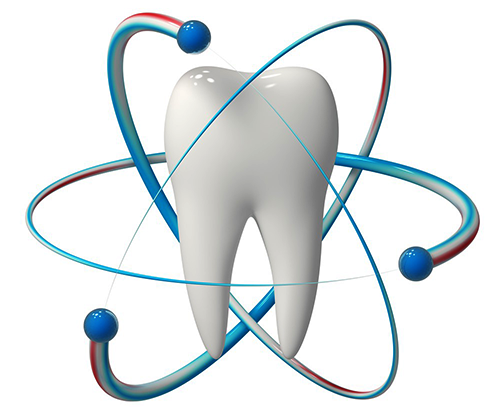
Returning to not a fictional story. A customer on a 3D printer approached me. He himself is a dentist, is engaged in surgery and prosthetics. I ordered a printer in general. After some time, he calls me again and asks him to print a template for drilling holes in the patient's jaw. Of course, I did not refuse. It is worth considering that the operation is scheduled immediately after the weekend, and everyone in the city is relaxing on the weekend, i.e. there is nowhere to print, and if anyone works, there is no polymer, no luck, in general.
We now turn directly to the problem to be solved.
So, the problem is as follows. There is a person who, for whatever reason, has lost his teeth and wears an artificial jaw. After a while, he got tired of it and wanted a man to put in himself implants.
Under the implant is necessary to drill a hole in the jaw.
In the video below - the template is white.
Here, just, such a template will be printed on a 3D printer.
How it is made:
1. A cast is taken from the patient's jaw.
2. Made plaster mold jaw of the patient.
2. The plaster mold is scanned by a 3D scanner.
4. A template is created on the basis of the scanned impression, which is the response part of the impression. In the necessary places are applied cylindrical holes-guides for the drill.
How does it look in reality:
Plaster mold

Here is a 3D model, ready for printing.
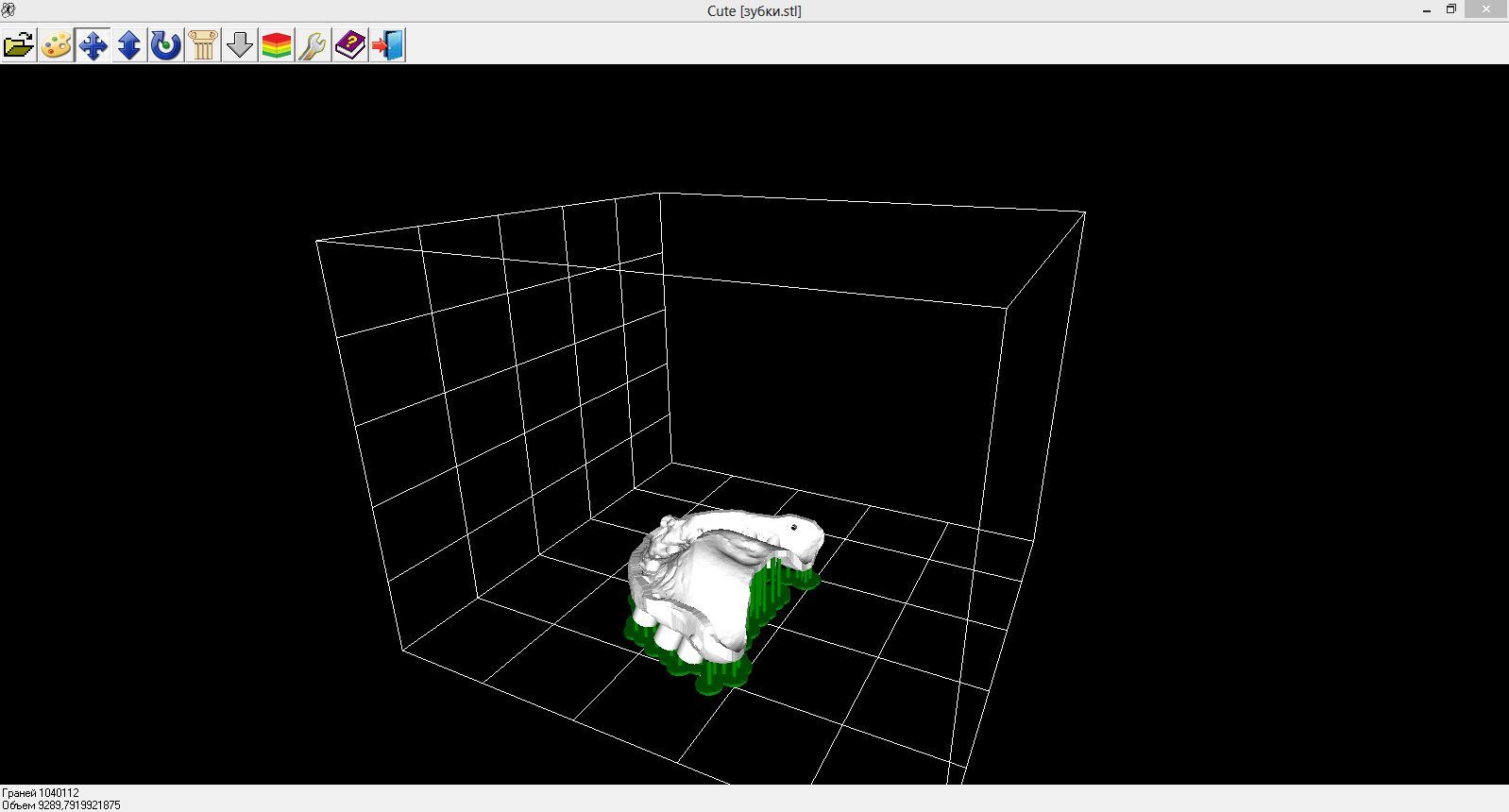
After printing, the template looks like this.
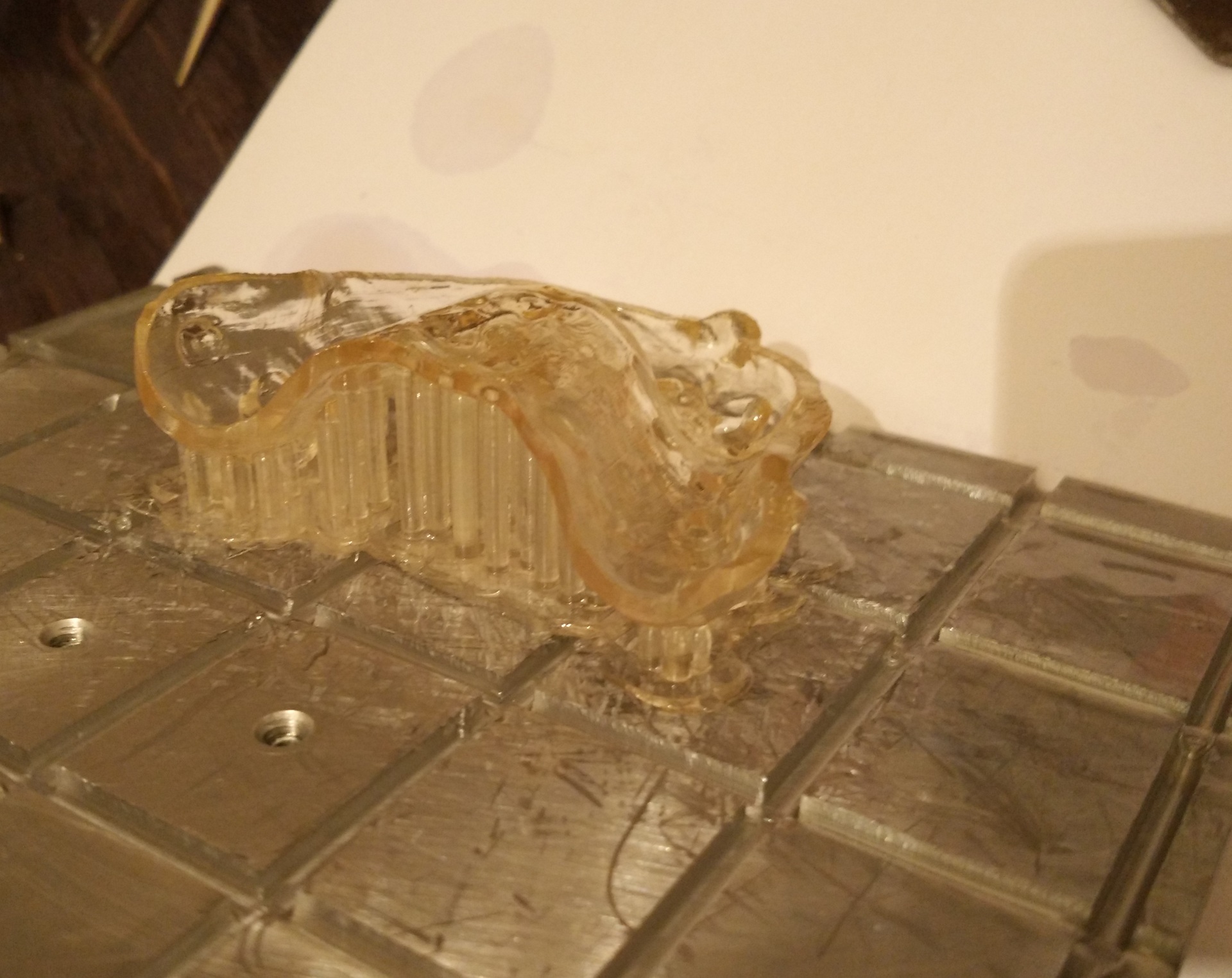
And purified from the polymer, like this. By the way I will say that it was printed with a layer of 50 microns.
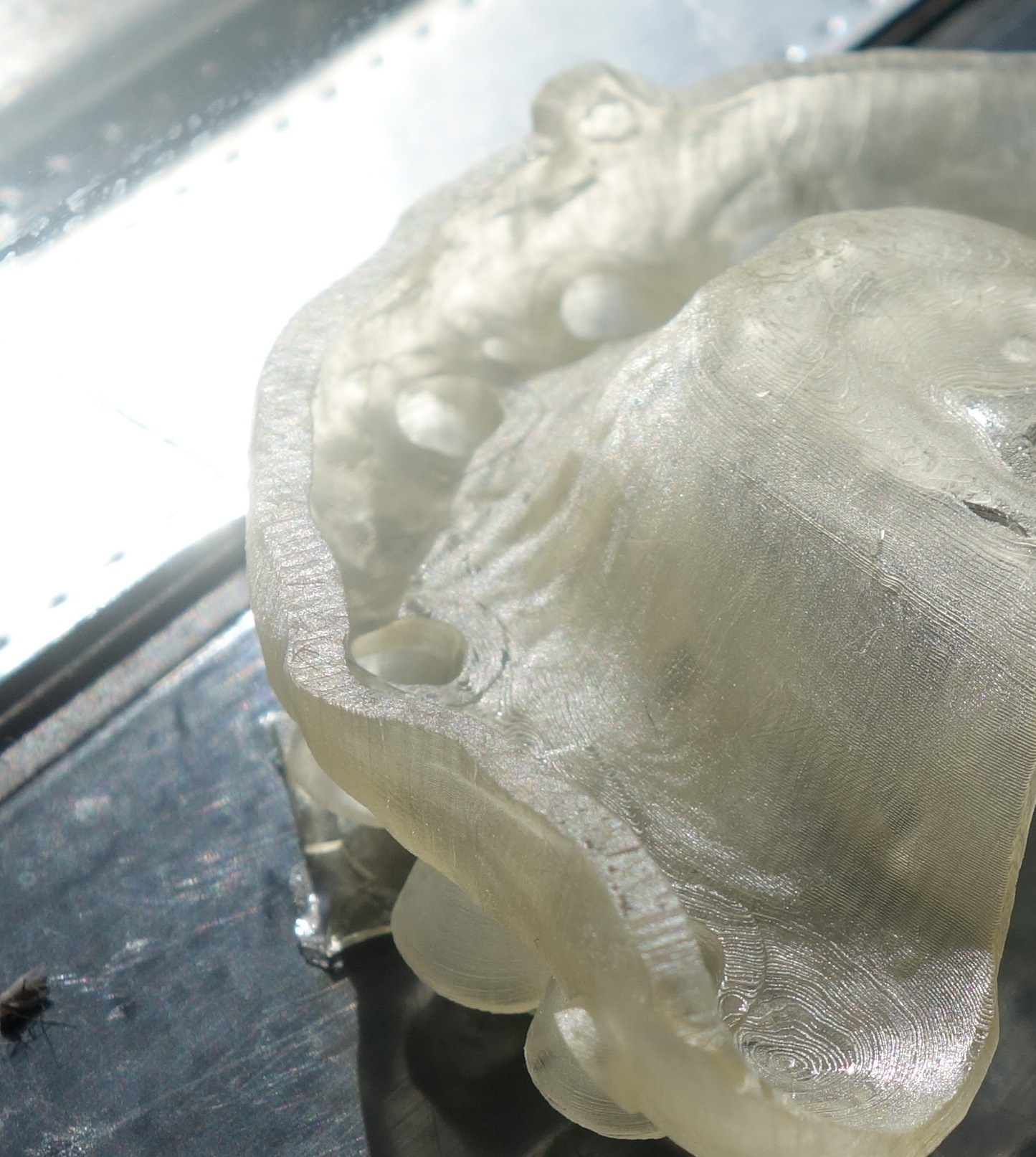
Next to the plaster layout of the jaw.
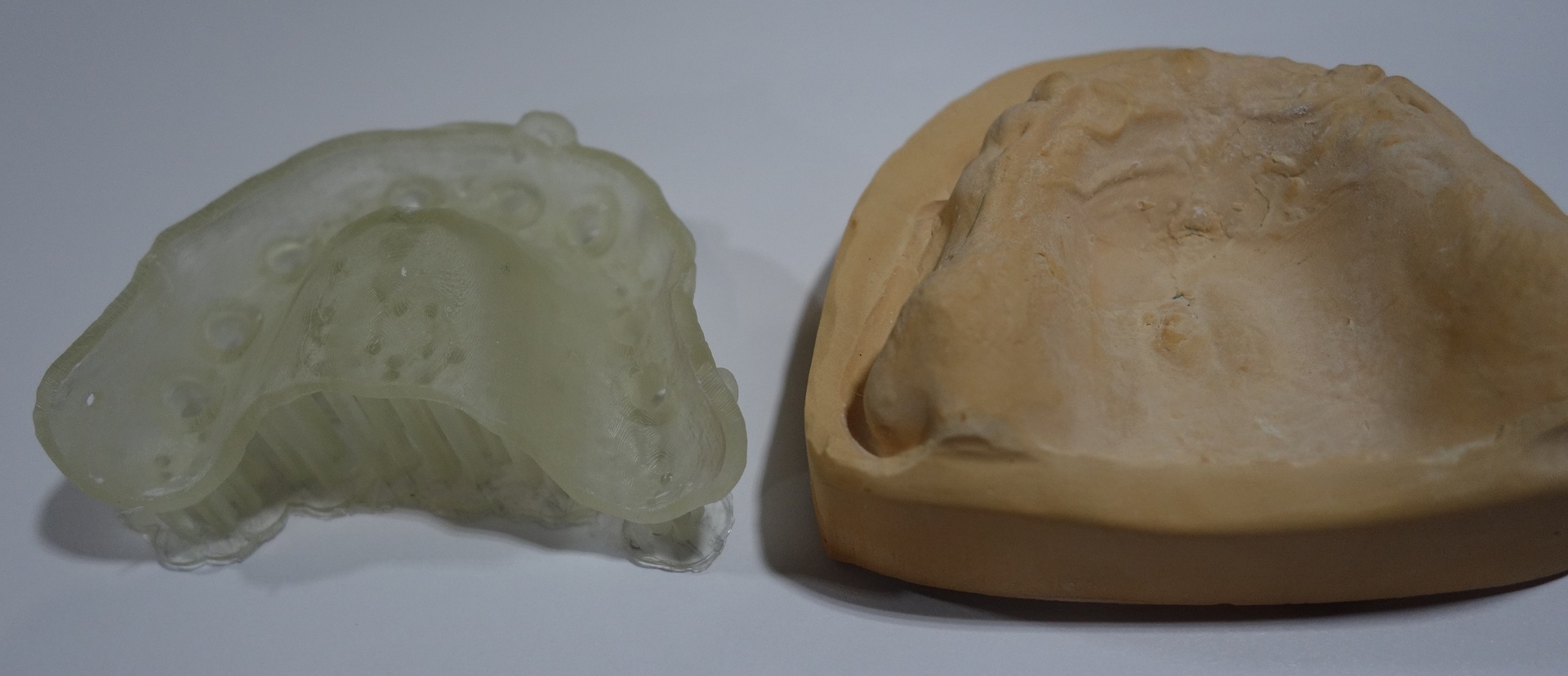
Well, the final and exciting moment - fitting.
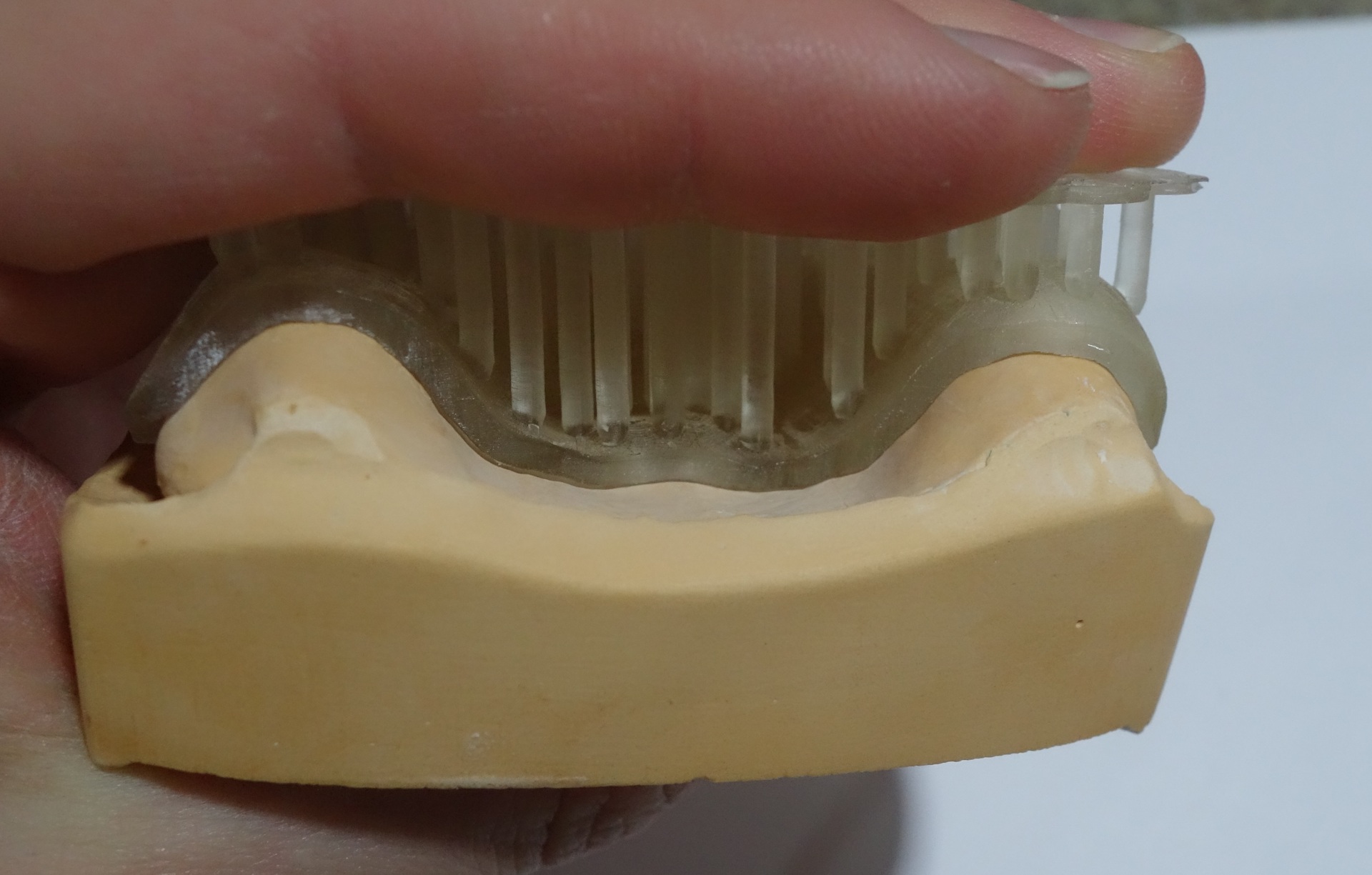
Video of the most exciting moment: D
Obviously, the whole village where necessary without gaps and other troubles.
As for the cost, there must be some benefit for the dentist to have a printer on hand. Saving, firstly, in time, no need to go anywhere, no one to negotiate, the equipment is on your desk and working.
The money is also very significant savings - the cost of printing such a template in St. Petersburg is about 3000-3500 rubles, printing it on RK-1, the cost, based on the cost of materials, is obtained in the region of 60 rubles. The difference is more than 50 times! ;)
What use of 3D printers in dentistry do you know?
PS The patient has an operation tomorrow (05/03/2016), I wish him good luck :)
Add a little about drills. For dentistry, for drilling the jaw through the template, the drill has a cutting edge not the entire length of the drill, there is a cylindrical part that serves as a guide when drilling the jaw through the template.
The drill looks like this:
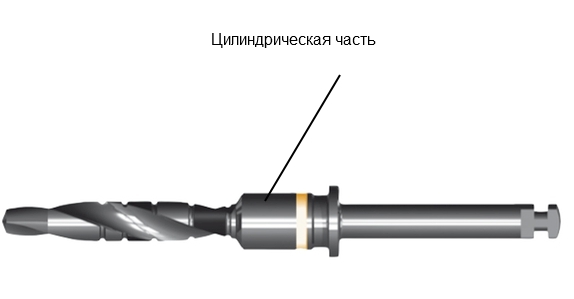
My name is Sergey.
Today I will talk a little about the best dental application (price-quality ratio) SLA 3D printer RK-1. The story is based on real events.
In many descriptions of 3D printers it is written: it can be used to solve problems and problems of dentistry, an ideal solution for dentistry and similar messages. What does this mean? In this article I will describe only one application that I faced.
')

Returning to not a fictional story. A customer on a 3D printer approached me. He himself is a dentist, is engaged in surgery and prosthetics. I ordered a printer in general. After some time, he calls me again and asks him to print a template for drilling holes in the patient's jaw. Of course, I did not refuse. It is worth considering that the operation is scheduled immediately after the weekend, and everyone in the city is relaxing on the weekend, i.e. there is nowhere to print, and if anyone works, there is no polymer, no luck, in general.
We now turn directly to the problem to be solved.
So, the problem is as follows. There is a person who, for whatever reason, has lost his teeth and wears an artificial jaw. After a while, he got tired of it and wanted a man to put in himself implants.
Under the implant is necessary to drill a hole in the jaw.
In the video below - the template is white.
Here, just, such a template will be printed on a 3D printer.
How it is made:
1. A cast is taken from the patient's jaw.
2. Made plaster mold jaw of the patient.
2. The plaster mold is scanned by a 3D scanner.
4. A template is created on the basis of the scanned impression, which is the response part of the impression. In the necessary places are applied cylindrical holes-guides for the drill.
How does it look in reality:
Plaster mold

Here is a 3D model, ready for printing.
After printing, the template looks like this.

And purified from the polymer, like this. By the way I will say that it was printed with a layer of 50 microns.
Next to the plaster layout of the jaw.
Well, the final and exciting moment - fitting.
Video of the most exciting moment: D
Obviously, the whole village where necessary without gaps and other troubles.
As for the cost, there must be some benefit for the dentist to have a printer on hand. Saving, firstly, in time, no need to go anywhere, no one to negotiate, the equipment is on your desk and working.
The money is also very significant savings - the cost of printing such a template in St. Petersburg is about 3000-3500 rubles, printing it on RK-1, the cost, based on the cost of materials, is obtained in the region of 60 rubles. The difference is more than 50 times! ;)
What use of 3D printers in dentistry do you know?
PS The patient has an operation tomorrow (05/03/2016), I wish him good luck :)
Add a little about drills. For dentistry, for drilling the jaw through the template, the drill has a cutting edge not the entire length of the drill, there is a cylindrical part that serves as a guide when drilling the jaw through the template.
The drill looks like this:

Source: https://habr.com/ru/post/393751/
All Articles